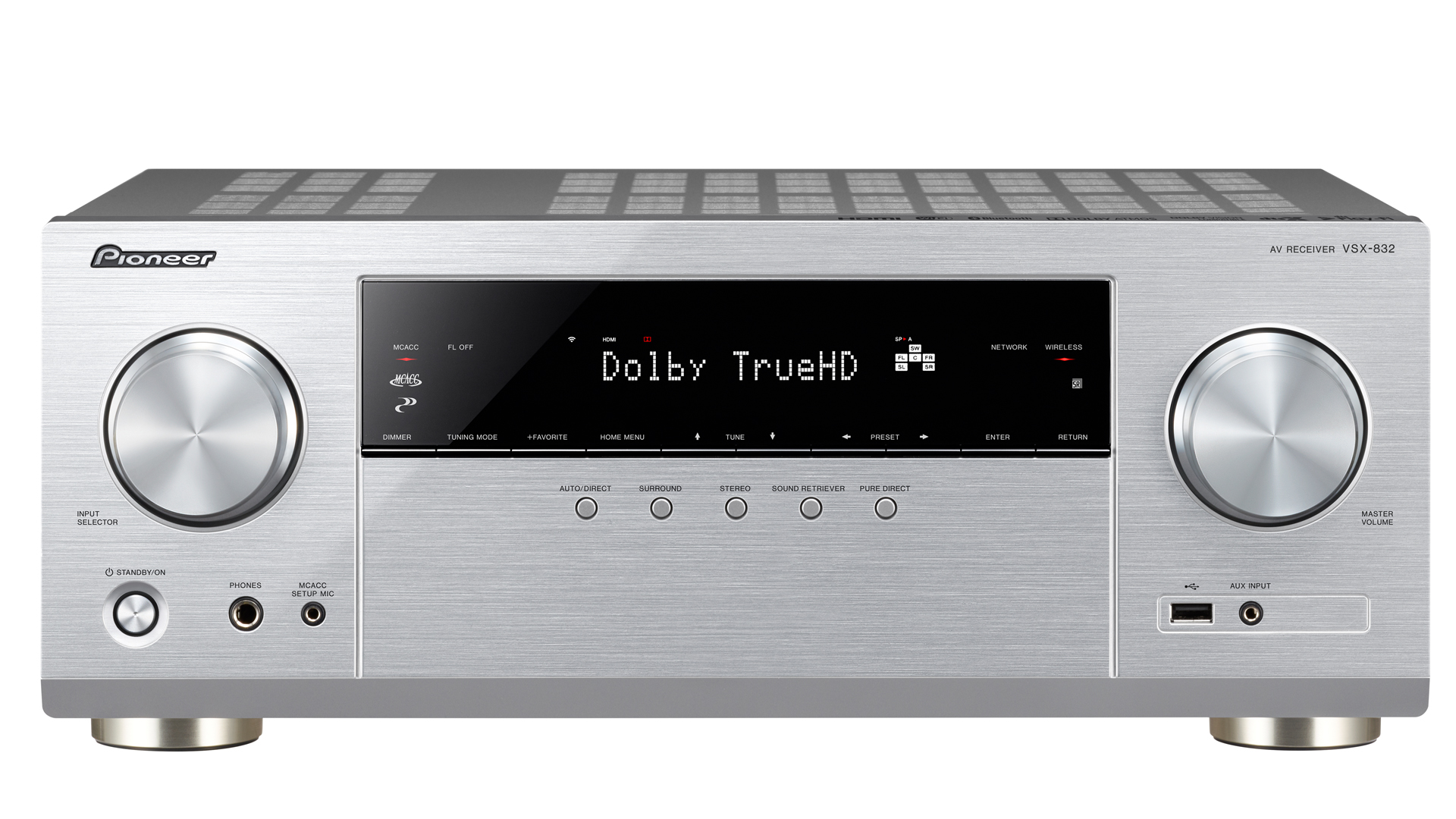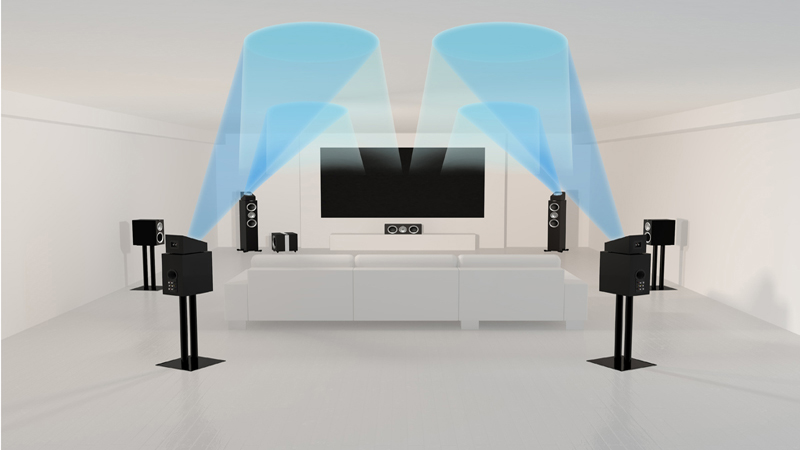Home Cinema AV receivers 101: the ultimate beginners guide

If you want to hear Daenerys Targaryen’s dragons fly realistically overhead, expertly track unseen Bokoblin in Hyrule or enjoy trouser-flapping road racing with Vin Diesel’s Furious crew, then you need a full-blown home cinema system.
Soundbars are all well and good, but when it comes to indulging in genuinely immersive audio then a multichannel home theatre receiver is the real deal.
To be honest, AV receivers (AVRs) have an onerous reputation for complexity, a consequence of their do-everything nature and decades of design complacency. Thankfully they’re now a lot easier to live with, courtesy of graphical interfaces actually designed for humans (take a bow Denon) and inclusive usability.

Virtually all AV receivers support integrated music services (Spotify, Tidal, Deezer etc), either directly or via an app. Wi-Fi and Bluetooth have become common features, while integrated Apple Airplay and Chromecast, as found on the Onkyo TX-NR676E and the Pioneer VSX-LS302, simplify streaming even further.
If you’re looking to upgrade a long serving AV amplifier, or jump into the glitzy world of home cinema for the first time, here’s everything you need to know…
Incredibly not just Hulks
Let’s state the obvious. AV receivers aren’t pretty. As a breed, they’re large and imposing.
But size doesn’t have to be a pre-requisite. You can now buy slimline models which slot sensibly into regular AV furniture racks. These tend to be just as well-specified as their larger stablemates, but lack a certain amount of muscle.
Sign up for breaking news, reviews, opinion, top tech deals, and more.

Marantz has the half-height line, currently led by the NR1607. It may only be 100mm tall, but the specification is far from thin. This 7.2 channel Dolby Atmos and DTS:X (more on which later) receiver supports Hi-Res Audio sources and has a power output rated at 50W per channel (into 8 Ohms).
Pioneer offers the even slimmer VSX-S520D. This 5.1 channel cutie is just 70mm tall, offers 4K compatibility and has a DAB tuner. It’s rated at 6x80W RMS into 4 Ohms.

Volume isn't just about loudness
If you want to prioritize clout over cosmetics, opt for a full-height AV receiver, and you’ll (at least) double your output power. Volume isn’t just about loudness. The easier it is for an AV receiver to reach a comfortable cinematic listening level, the less fatiguing it will sound.
The most powerful AVRs handle fast, dynamic transients (those literally explosive moments that define action movies) with ease; Quiet-Quiet-Bang horror movies will have you leaping from your seat in fright.
Room tuning explained
All receivers offer some form of room equalization during the set-up process, and while they work the same way, using a plug-in microphone, results can vary dramatically.
Yamaha uses YPAO room calibration software which can measure up to eight listening positions, although it’s unlikely you’ll need to do more than four to cover your main seating area.
Denon and Marantz employ Audyssey. Versions vary according to model, but the high spec MultEQ XT32 iteration also allows you to measure up to eight listening positions, adding SubEQ to tighten up paired subwoofers.
Pioneer has various flavours of its own MCACC, while Arcam licenses DIRAC Live, the most sophisticated and effective of all room calibration systems.
Don’t be a slave to the set-up though. If you room sounds better without calibration, go au naturale. Alternatively, apply calibration to the surrounds but not the main stereo pair. Experiment. Every room sounds different.

What version of Dolby Atmos do I need?
Dolby Atmos audio decoding is a pre-requisite for any modern AV receiver. Our best advice is don’t buy one without it. Best known of all the 3D audio codecs, it’s found on Blu-ray discs and increasingly alongside 4K video pay TV services – currently BT Sport, but soon Sky too.
Lower cost Atmos-equipped AVRs are usually seven channel designs. This translates to a 5.1.2 Dolby Atmos configuration – that’s to say 5.1 surround with two Atmos height channels.
5.1.2 systems work well in smaller rooms, where Atmos-enabled upfiring loudspeakers (or in-ceiling speakers, if you have them) are within 1.5m of the listening position.
Larger rooms will benefit from a beefier nine channel receiver, giving the option of Dolby Atmos in 5.1.4 or 7.1.2. Some users may like a flatbed of seven channels, with side and rear speakers, plus a height component, others might prefer four height channels and two rears.

Higher-end AV receivers can offer eleven channels of amplification, aka 7.1.4, for the ultimate immersive audio experience, or give you the option of expanding a seven channels to nine using additional amplification. The Denon AVR-X4300H is one such, a ferociously powerful 200w (into 6 Ohms) p/c nine-channel Atmos AVR with a full 11.2 pre-amp output.
Of course, filling your home with multiple loudspeakers is always going to present a challenge, so manufacturers are devising ways of using DSP to simulate extra channels.
Sony’s STR-DN1080 receiver is a 5.1.2 channel design, but employs Phantom Surround virtual speakers to create a listening experience akin to 7.1.2. Meanwhile, the Pioneer VSX-832 has just 5.1 channels of real amplification, but uses newly developed Dolby Atmos virtualization techniques to create an immersive soundstage.
Dolby Atmos isn’t the only 3D audio game in town. Most Dolby Atmos receivers also offer support for DTS:X, a rival immersive sound format. Denon and Marantz even allow you to purchase an upgrade for Auro 3D, the most esoteric of all 3D audio formats.
From cinema to multiroom
AV receivers are no longer just for theatres and Hi-Fi listening rooms. Increasingly you can use them as part of a whole home multiroom audio system. Chromecast audio, Onkyo FireConnect, Denon Heos and Yamaha MusicCast are examples of multiroom ecosystems which can be built around AV receivers.
Yamaha’s Aventage AVR range can stream connected sources to any other MusicCast speaker on a home network. This means, you can listen to the audio from a TV set top box plugged into the AVR, via a wireless MusicCast speaker in the kitchen.
Most AVRs also allow you to run physical cables to a second location, either audio only or both sound and vision, for simple multiroom playback.

Make sure you’re 4K ready – HDMI versions explained
It’s important that any home cinema receiver be as future-proof as possible. So try and buy one with as many 4K-ready HDMI inputs as possible. Some cheaper receivers mix 4K ready inputs with HD-only ones. As you might expect with HDMI, there’s plenty of devil in the detail.
While any HDMI v2.0 input will be compatible with 4K sources, you’ll need inputs that support HDMI v2.0a to ensure that HDR metadata makes it through to an HDR-capable display. The key attribute to both HDMI v2.0 iteration is support for HDCP 2.2 copy protection, which is used by all commercially available 4K sources, including UHD Blu-ray, 4K set top boxes like Sky Q and Virgin Media V6, and 4K media streamers.
Finally, look out for how many HDMI outputs your chosen home cinema receiver has. Cheaper models offer just one, but step-up models have two (or even three), allowing you to feed a TV and a home cinema projector simultaneously.
Right. That’s your Next Gen home cinema receiver sorted. Let’s get the popcorn in...
- If you want a more compact solution, consider investing in on of our best soundbars.

Steve has been writing about AV and home cinema since the dawn of time, or more accurately, since the glory days of VHS and Betamax. He has strong opinions on the latest TV technology, Hi-Fi and Blu-ray/media players, and likes nothing better than to crank up his ludicrously powerful home theatre system to binge-watch TV shows.